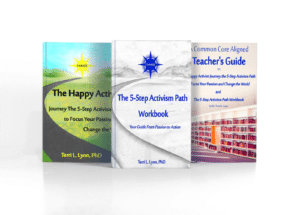- The Meaning of Critical Thinking: A Key Skill for Navigating Today’s Information Landscape - November 3, 2025
- Grandparents Can Develop Activist Grandchildren - September 29, 2025
- Top Six Reasons Credit Union Benefits Are a Smart Choice Over Banks - August 18, 2025
Last Updated on November 16, 2024
In this blog post, I explore how you can expand your power and turn your skills into activism impact.
Do you feel a call to action but wonder if you have the right skills for activism? You don’t need an activism degree. Activism can take many forms, and you, regardless of your skills, can make a difference. Understanding your strengths and aligning them with the cause closest to your heart can make you a powerful force for change. Artists, writers, engineers, teachers, and entrepreneurs can harness their skills to drive meaningful change.
In this video, Jeremy succeeds by turning his skills into activism impact.
Understanding How to Turn Your Skills into Activism Impact
When Jeremy learned the importance of using his best skill in activism, he found a way to make a difference for a cause he cares deeply about. By clarifying his gifts, he found activism that suited him and kept him motivated.
Take a moment to reflect on your skills.
Your Ordinary Superpower
What comes effortlessly to you? When I speak to budding activists, I ask them about what author Mark Hensen calls their ‘ordinary superpower.’ Everyone has one. It might be baking, being a good listener, or planning parties. And that ordinary superpower can be used in activism.
Skills You Have Learned
Have you gained expertise in specific areas? Maybe you’re a graphic designer, mechanic, or teacher. These are also skills that can be applied to activism.
Hobbies
Sometimes, our hobbies reveal hidden talents. Perhaps you’re a musician, a cook, or a gardener. And yes, these skills can be used in activism, too!
Turn Your Skills into Activism Impact

- Writing: If you enjoy writing, you can create articles, blog posts, or social media content to raise awareness about your cause.
- Art: Use your artistic skills to design posters, infographics, and visual campaigns that convey powerful messages.
- Public Speaking: If you’re comfortable speaking in front of an audience, consider giving talks, leading workshops, or organizing community events.
- Technical Skills: Programmers, engineers, and IT professionals can develop websites, apps, and tools that support nonprofits.
- Teaching and Training: Educators can create and deliver workshops, courses, and training sessions.
Align Your Skills with Causes
Once you’ve identified your skills, think about how they can be aligned with the cause closest to your heart. Here are a few examples:
- If you’re a photographer, use your skills to document environmental issues and create visual stories highlighting the urgency of climate action.
- If you’re a lawyer, offer pro bono legal services to marginalized communities.
- If you’re a teacher, help a disability nonprofit train its volunteers.
For example, here are some real-life ways activists turn their skills into activism impact.
Artistic Activism: The Guerrilla Girls
The Guerrilla Girls are an anonymous group of feminist artists who use art to challenge sexism and racism in the art world. By creating provocative posters, billboards, and performances, they raise awareness about the underrepresentation of women and people of color in art institutions. Their creative approach to activism has sparked essential conversations and driven changes in the industry.
Tech for Good: Code for America
Code for America is a nonprofit organization that uses technology to improve government services and empower communities. By leveraging the skills of programmers, designers, and data scientists, they create digital tools that make government processes more efficient and accessible. Their projects have addressed issues such as criminal justice reform, healthcare access, and civic engagement.
The 5-Step Activism Path
In Step 1, you find the cause closest to your heart. In Step 2, you inventory the gifts you bring to the activism table. As you progress through the remaining steps, find an activism method you love and look for ways to bring your passions and skills into the perfect activism opportunity. The world needs your unique contribution.
Announcement

In addition, The What’s On Your Sign? Workbook has also been updated and renamed The 5-Step Activism Path Workbook. I designed the workbook to provide readers with actionable steps and exercises that align with The Happy Activist. It’s the perfect tool for anyone looking to deepen their engagement and make a more meaningful impact.
To support educators and community leaders, I have developed a Common Core-aligned Teacher’s Guide. This resource provides lesson plans, activities, and discussion prompts to inspire and empower the next generation of activists.
READ NEXT
The Happy Activist: Journey the 5-Step Activism Path to Focus Your Passion and Change the World
How To Turn Your Passion Into Action



